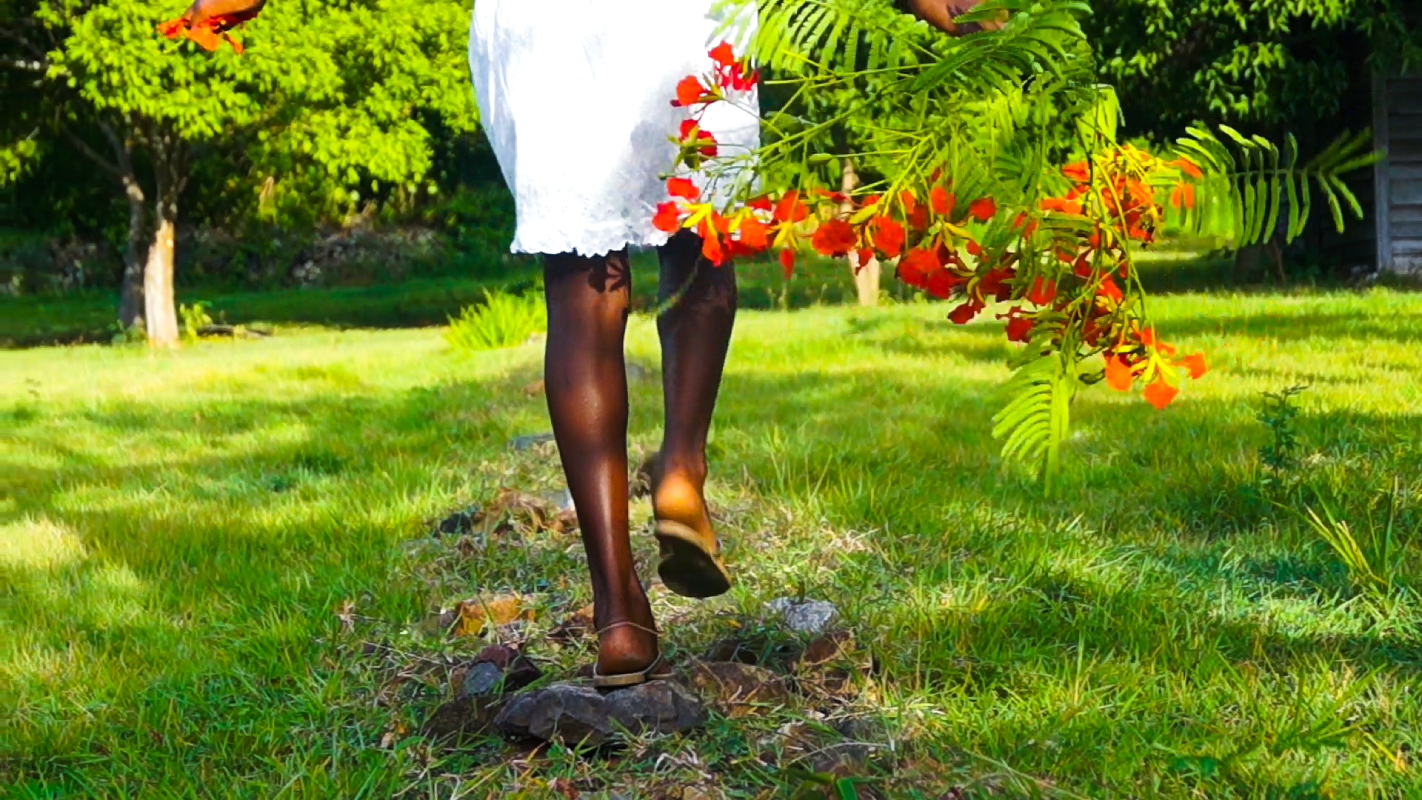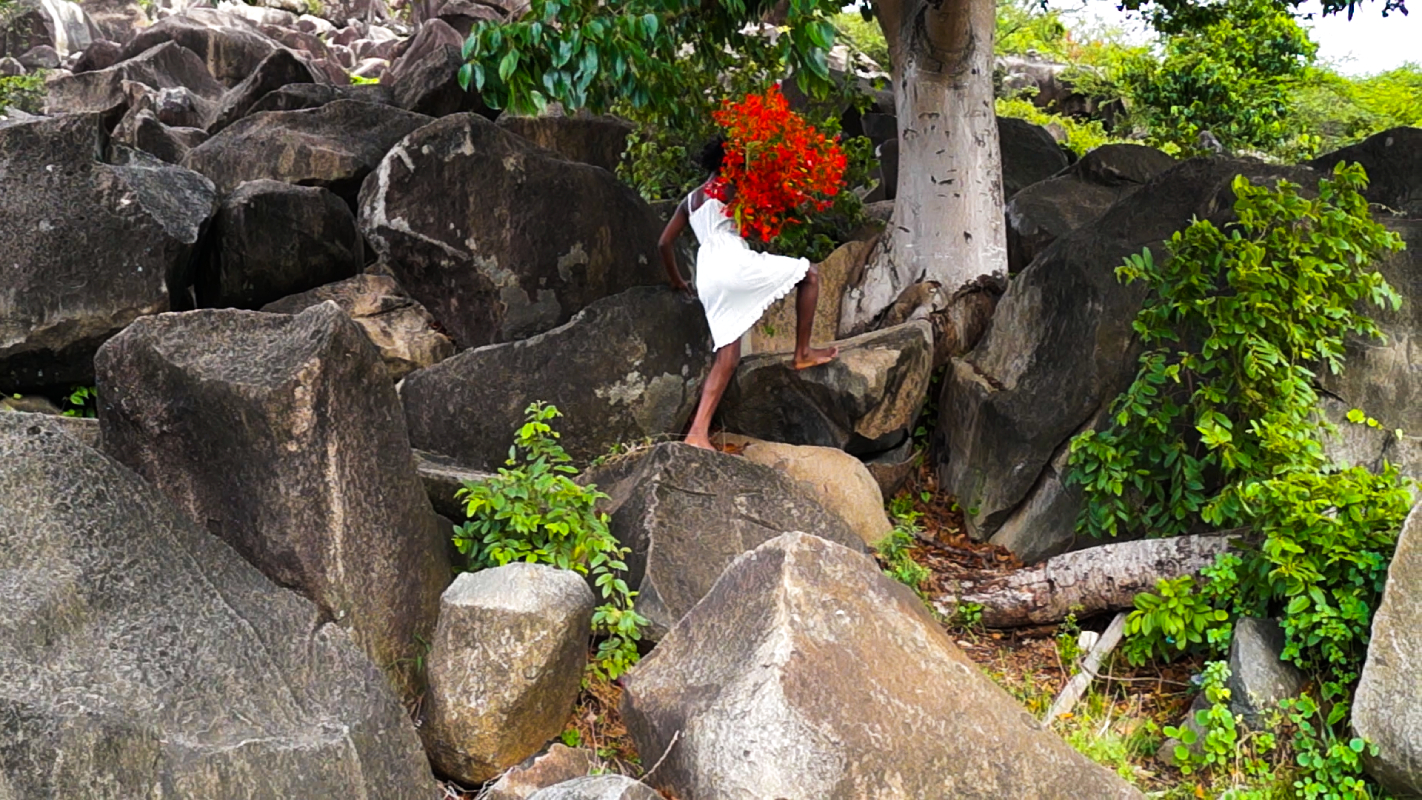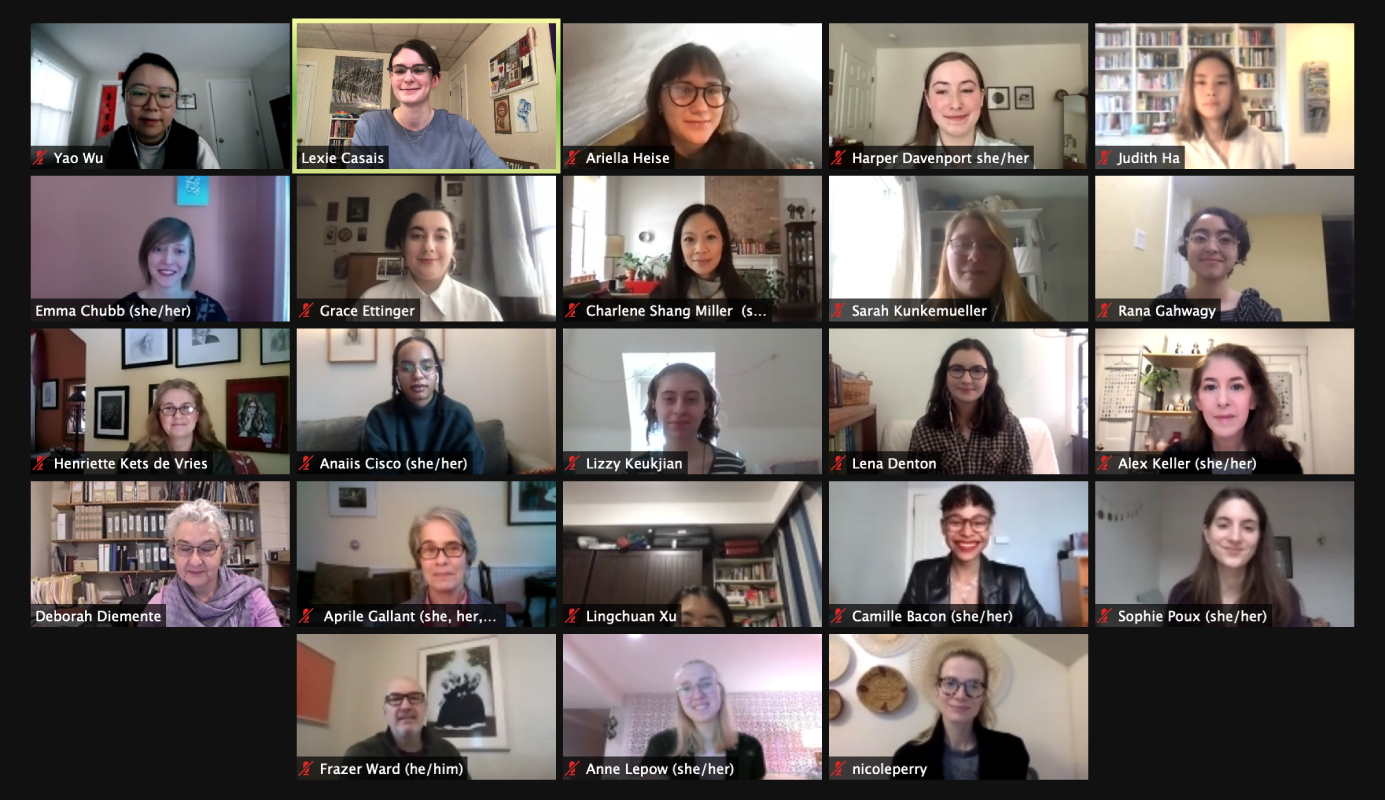
Collecting 101: acquisition of Deborah Jack’s ‘the water between us remembers, so we wear this history on our skin, long for a sea-bath and hope the salt will cure what ails us’
Become a student member today at SCMA. It's free! Open to any current student attending Smith, student membership enables you VIP access to learn about upcoming events, exhibits and programs before the general public and Smith community. Fill out this form to opt-in.
The rewards of student membership include:
- eVites to exhibit extras, private tours, and events
- Subscription to our eNewsletter to stay on top of all things SCMA
- 10% Discount at Museum Store
Sophie Poux is a student assistant in the Cunningham Study Center, a Government major, and a member of the class of 2021.
I am thrilled to announce SCMA’s acquisition of Deborah Jack’s the water between us remembers, so we wear this history on our skin, long for a sea-bath and hope the salt will cure what ails us (2018). I was one of the thirteen students enrolled in “Studies in Museums: Collecting 101 and Time-Based Media” whose efforts and input supported the acquisition of this sixteen-minute-long single-channel video artwork. Emma Chubb, Charlotte Feng Ford '83 Curator of Contemporary Art, and Aprile Gallant Associate Director of Curatorial Affairs and Senior Curator of Prints, Drawings and Photographs, co-taught this latest rendition of Collecting 101 during the January 2021 interterm, and Indigo Casais ’23 was the course assistant.

Deborah Jack. Dutch; St. Maarten, b. 1970. Still from the water between us remembers, so we wear this history on our skin, long for a sea-bath and hope the salt will cure what ails us, 2018. Single-channel video. Purchased through the efforts of students in the class “Collecting 101,” January 2021. SC 2021.2.
It was an absolute delight to be a member of this course. Structured as a combination of theory and praxis, we spent the first few class meetings studying the museum acquisition process and time-based media, as well as SCMA’s collecting plan and existing collection of time-based media artworks. We were introduced to some of the concepts, histories, and visual tropes at play in the works being considered for acquisition, all of which are contemporary video artworks by Caribbean women of color. The class read and discussed visual histories of tropicalization, neocolonial tourism, the archive, intergenerational bodies knowledge, and, of course, time.
This course has been taught in a variety of ways, but this was the first Collecting 101 course to take place on Zoom. While viewing works of art online often poses challenges, this platform lent itself well to viewing and discussing video art. Students were physically located across the country and around the globe and hailed from academic disciplines at Smith including art history, studio art, and museums studies, but also Africana studies, anthropology, geosciences, government, and math.
Working virtually also facilitated visits from each of the artists whose works were being considered for acquisition. For me, the conversations that we had with each artist illuminated their work of art. Equipped with our rich readings and discussions from the previous weeks, I found each of these visits to be generous, surprisingly personal, and very inspiring.

Group photo of Collecting 101 and the Acquisition Review Committee on Zoom in February
Finally, we split into three different groups of students, each team focusing on the acquisition proposal for one artwork. Informed by the artists’ visits to our class meetings, we composed and presented proposals to an acquisition review committee made up of members of the SCMA staff from the curatorial, collections management, and education teams and professors from the Departments of Art and Film and Media Studies. After the presentation and discussion between committee members and students, the acquisition review committee voted to acquire Jack’s artwork.
The proposal for the acquisition of Deborah Jack’s the water between us remembers, so we wear this history on our skin, long for a sea-bath and hope the salt will cure what ails us was a collaboration between students Camille Bacon, Lena Denton, Anne Lepow, and Lingchuan Xu. In their written proposal, they addressed the relevance of the artwork to SCMA’s collection and work as a teaching museum: “the water between us remembers [...] addresses issues of colonialism and tropicality which serve to contextualize SCMA’s collection of paintings featuring themes of tropicalization,” including Frederic Edwin Church’s Morning in the Tropics, George Biddle’s On the Beach at Jacmel, and Albert Bierstadt’s Landscape in the Bahamas.

Left: Albert Bierstadt. American,1830–1902. Landscape in the Bahamas, ca. 1877–mid-1880s. Oil on paperboard mounted on canvas. Purchased. SC 1951.201.
Center: Frederic Edwin Church. American, 1826–1900. Morning in the Tropics, 1883. Oil on canvas. Purchased with the Winthrop Hillyer Fund. SC 1891.2.1.
Right: George Biddle. American, 1885–1973. On the Beach at Jacmel, 1927. Watercolor over pencil on paper. Gift of Mrs. William J. Kridel (Carol Mayer Hirsch, class of 1941). SC 1966.54.
Bacon, Denton, Lepow, and Xu analyzed Jack’s presentation of body and land as archives of past, present, and future, arguing that it unsettles the colonial contention that “logic” is “the sole means of ‘legitimate’ knowledge production,” writing that “Jack masterfully manipulates light and sound throughout the work to interrupt the spectator's process of meaning making. […] The use of light and sound corrode idyllic imaginings of the Caribbean landscape, thereby highlighting the many memories that both the land and therefore the young girl’s body have hidden within them.”

Deborah Jack. Dutch; St. Maarten, b. 1970. Still from the water between us remembers, so we wear this history on our skin, long for a sea-bath and hope the salt will cure what ails us, 2018. Single-channel video. Purchased through the efforts of students in the class “Collecting 101,” January 2021. SC 2021.2
Being a part of of the acquisition process this January interterm gave me a greater appreciation for all of the hard work that goes into building a permanent collection like SCMA's. I hope to view the water between us remembers in person in the new media gallery soon, and delight in the knowledge that this work of art will be an opportunity for learning, reflection, and the joy for many generations of Smith students, staff, and faculty as well as members of the wider community.